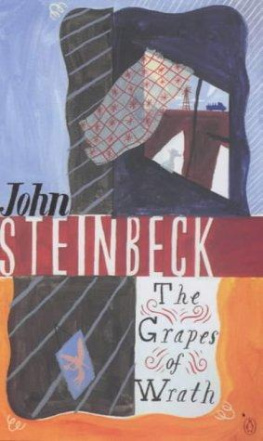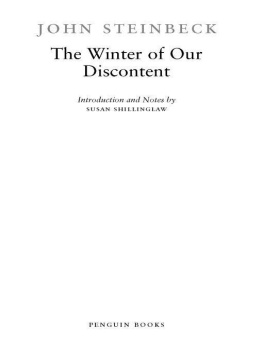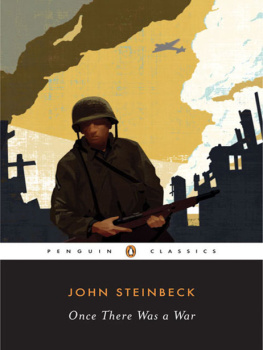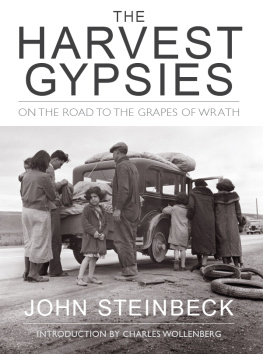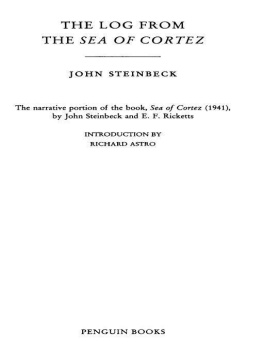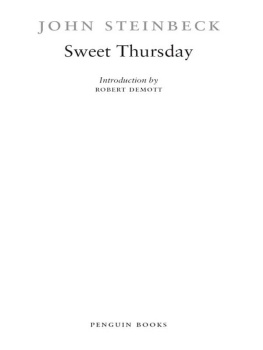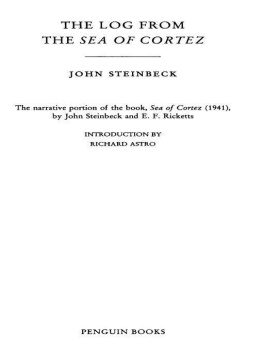John Steinbeck - The forgotten village : with 136 photographs from the film of the same name
Here you can read online John Steinbeck - The forgotten village : with 136 photographs from the film of the same name full text of the book (entire story) in english for free. Download pdf and epub, get meaning, cover and reviews about this ebook. City: New York, México, year: 2009, publisher: Penguin Books, genre: Children. Description of the work, (preface) as well as reviews are available. Best literature library LitArk.com created for fans of good reading and offers a wide selection of genres:
Romance novel
Science fiction
Adventure
Detective
Science
History
Home and family
Prose
Art
Politics
Computer
Non-fiction
Religion
Business
Children
Humor
Choose a favorite category and find really read worthwhile books. Enjoy immersion in the world of imagination, feel the emotions of the characters or learn something new for yourself, make an fascinating discovery.
- Book:The forgotten village : with 136 photographs from the film of the same name
- Author:
- Publisher:Penguin Books
- Genre:
- Year:2009
- City:New York, México
- Rating:4 / 5
- Favourites:Add to favourites
- Your mark:
- 80
- 1
- 2
- 3
- 4
- 5
The forgotten village : with 136 photographs from the film of the same name: summary, description and annotation
We offer to read an annotation, description, summary or preface (depends on what the author of the book "The forgotten village : with 136 photographs from the film of the same name" wrote himself). If you haven't found the necessary information about the book — write in the comments, we will try to find it.
John Steinbeck: author's other books
Who wrote The forgotten village : with 136 photographs from the film of the same name? Find out the surname, the name of the author of the book and a list of all author's works by series.
The forgotten village : with 136 photographs from the film of the same name — read online for free the complete book (whole text) full work
Below is the text of the book, divided by pages. System saving the place of the last page read, allows you to conveniently read the book "The forgotten village : with 136 photographs from the film of the same name" online for free, without having to search again every time where you left off. Put a bookmark, and you can go to the page where you finished reading at any time.
Font size:
Interval:
Bookmark:
Table of Contents
PENGUIN BOOKS
THE FORGOTTEN VILLAGE
Born in Salinas, California, in 1902, JOHN STEINBECK grew up in a fertile agricultural valley about twenty-five miles from the Pacific Coastand both valley and coast would serve as settings for some of his best fiction. In 1919 he went to Stanford University, where he intermittently enrolled in literature and writing courses until he left in 1925 without taking a degree. During the next five years he supported himself as a laborer and journalist in New York City and then as a caretaker for a Lake Tahoe estate, all the time working on his first novel, Cup of Gold (1929). After marriage and a move to Pacific Grove, he published two California fictions, The Pastures of Heaven (1932) and To a God Unknown (1933), and worked on short stories later collected in The Long Valley (1938). Popular success and financial security came only with Tortilla Flat (1935), stories about Montereys paisanos. A ceaseless experimenter throughout his career, Steinbeck changed courses regularly. Three powerful novels of the late 1930s focused on the California laboring class: In Dubious Battle (1936), Of Mice and Men (1937), and the book considered by many his finest, The Grapes of Wrath (1939). Early in the 1940s, Steinbeck became a filmmaker with The Forgotten Village (1941) and a serious student of marine biology with Sea of Cortez. He devoted his services to the war, writing Bombs Away (1942) and the controversial play-novelette The Moon Is Down (1942). Cannery Row (1945), The Wayward Bus (1947), The Pearl (1947), A Russian Journal (1948), another experimental drama, Burning Bright (1950), and TheLog from the Sea of Cortez (1951) preceded publication of the monumental East of Eden (1952), an ambitious saga of the Salinas Valley and his own familys history. The last decades of his life were spent in New York City and Sag Harbor with his third wife, with whom he traveled widely. Later books include Sweet Thursday (1954), The Short Reign of Pippin IV:A Fabrication (1957), Once There Was a War (1958), TheWinter of Our Discontent (1961), Travels with Charley in Search of America (1962), America and Ameri cans (1966), and the posthumously published Journal of a Novel: The East of Eden Letters (1969), Viva Zapata! (1975), TheActs of King Arthur and His Noble Knights (1976), and Working Days: The Journals ofThe Grapes of Wrath (1989). He died in 1968, having won a Nobel Prize in 1962.

PENGUIN BOOKS
Published by the Penguin Group
Penguin Group (USA) Inc., 375 Hudson Street, New York, New York 10014, U.S.A.
Penguin Group (Canada), 90 Eglinton Avenue East, Suite 700, Toronto,
Ontario. Canada M4P 2Y3 (a division of Pearson Penguin Canada Inc.)
Penguin Books Ltd, 80 Strand, London WC2R 0RL, England
Penguin Ireland, 25 St Stephens Green, Dublin 2, Ireland
(a division of Penguin Books Ltd)
Penguin Group (Australia), 250 Camberwell Road, Camberwell, Victoria 3124,
Australia (a division of Pearson Australia Group Pty Ltd)
Penguin Books India Pvt Ltd, 11 Community Centre, Panchsheel Park,
New Delhi - 110 017, India
Penguin Group (NZ), 67 Apollo Drive, Rosedale, North Shore 0632,
New Zealand (a division of Pearson New Zealand Ltd)
Penguin Books (South Africa) (Pty) Ltd, 24 Sturdee Avenue,
Rosebank, Johannesburg 2196, South Africa
Penguin Books Ltd, Registered Offices: 80 Strand, London WC2R ORL, England
First published in the United States of America by The Viking Press 1941
Published in Penguin Books 2009
Copyright John Steinbeck, 1941 Copyright renewed John Steinbeck, 1968 All rights reserved
Film Credits:
THE FORGOTTEN VILLAGE
Story and script by John Steinbeck
Directed and produced by Herbert Kline
Co-Director and Director of PhotograPhy: Alexander Hackensmid
Music by Hanns Eisler
Narration by Burgess Meredith
Co-Producer: Rosa Harvan Kline
Production Manager: Mark Marvin
Assistant Director: Carlos Cabello
Cameraman: Agustin Delgado
Assistant Cameraman: Felipe Quintanar
eISBN : 978-1-101-15944-6
The scanning, uploading and distribution of this book via the Internet or via
any other means without the permission of the publisher is illegal and
punishable by law. Please purchase only authorized electronic editions,
and do not participate in or encourage electronic piracy of copyrighted
materials. Your support of the authors rights is appreciated.
http://us.penguingroup.com
PREFACE.
In the making of a film about a Mexican village we were faced with many problems, some of which were foreseen and some of which were met and overcome in the field while the picture was in production. A great many documentary films have used the generalized method, that is, the showing of a condition or an event as it affects a group of people. The audience can then have a personalized reaction from imagining one member of that group. I have felt that this is the more difficult observation from the audiences viewpoint. It means very little to know that a million Chinese are starving unless you know one Chinese who is starving. In The Forgotten Village we reversed the usual process. Our story centered on one family in one small village. We wished our audience to know this family very well, and incidentally to like it, as we did. Then, from association with this little personalized group, the larger conclusion concerning the racial group could be drawn with something like participation. Birth and death, joy and sorrow, are constants, experiences common to the whole species. If one participates first in these constants, one is able to go from them to the variables of customs, practices, mores, taboos, and foreign social patterns. That, at any rate, was our theory and the pattern in which we worked.
The working method was very simple, and yet required great patience. A very elastic story was written. Then the crew moved into the village, made friends, talked, and listened. The story was simple: too many children die- why is that and what is done about it, both by the villagers and by the government? The story actually was a question. What we found was dramaticthe clash of a medicine and magic that was old when the Aztecs invaded the plateau with a modern medicine that is as young as a living man. To tell this story we had only to have people re-enact what had happened to them. Our curandera was a real wise woman, one who practiced herbology and magic in the village; our teacher was a real teacher in the government school; our doctors real doctors; our mother a real mother who had lost a number of children. If they moved through scenes with sureness and authority it was because they had been through them many times before when no cameras were there. Such a method requires, above all else, patience, tact, and genuine liking for the people. The last we had, but we were not always successful in the first two. Mistakes were made, feuds started, quarrels precipitated which had to be settled and quenched with more patience and tact.
The villagers themselves were handsome and courteous and friendly; they had great dignity and flair and they were very poor, unbelievably poor. They lived in a social-religious frame which was part Aztec, part sixteenth-century Spanish Catholic, and part the thrusting toward social betterment which has been Mexicos drive for the past fifty years. We did not editorialize, attack, or defend anything. We put on film what we found, only arranging it to make a coherent story.
The most difficult problem of all was the method of telling the story to an American audience. Sound recorded on the scene was impracticable: the village was inaccessible to sound equipment. Dialogue was out of the question, even in Spanish, since many of the older people spoke little Spanish; they used the Indian language of their ancestors. The usual narrative method did not seem quite adequate. It was decided finally to use the method of the old story-tellera voice which interpolated dialogue without trying to imitate it, a very quiet voice to carry the story only when the picture and the music could not carry it; and, above all, a spoken story so natural and unobtrusive that an audience would not even be conscious of it. Such were the methods employed in making The Forgotten Village. A curious and true and dramatic film has been the result.
Next pageFont size:
Interval:
Bookmark:
Similar books «The forgotten village : with 136 photographs from the film of the same name»
Look at similar books to The forgotten village : with 136 photographs from the film of the same name. We have selected literature similar in name and meaning in the hope of providing readers with more options to find new, interesting, not yet read works.
Discussion, reviews of the book The forgotten village : with 136 photographs from the film of the same name and just readers' own opinions. Leave your comments, write what you think about the work, its meaning or the main characters. Specify what exactly you liked and what you didn't like, and why you think so.



